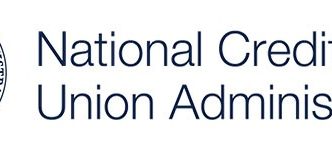The Federal Housing Finance Agency (FHFA) published a final rule on Aug. 16 that presents the standards and criteria, and outlines a four-phase process, that Fannie Mae and Freddie Mac (the Enterprises) will use to validate and approve third-party credit score models. The final rule implements Section 310 of the Economic Growth, Regulatory Relief, and Consumer Protection Act of 2018 (the Act), which amended the Enterprise charter acts and the Federal Housing Enterprises Financial
Safety and Soundness Act (Safety and Soundness Act).
Although the final rule is effective October 15, 2019, the FHFA anticipates the process of approving an alternative credit score model will take up to 26 months. That time frame doesn’t include the implementation of any approved model for use by the Enterprises and that process will likely take as much as two more years beyond that.
The FHFA believes, based on years of related credit score work, that it will take the industry approximately 18-24 months to adopt a new credit score model after a model has been approved by an Enterprise.
With that in mind, the entire time frame from approving an alternative credit score model to implementation of a different credit scoring model by the Enterprises will likely be at least four more years. Currently, Fannie Mae, and Freddie Mac require lenders to provide credit scores derived from the Classic FICO credit score model for each loan delivered to the Enterprises. The FHFA noted that it expects Classic FICO to meet the criteria for approval based on its history of use while continuing to state that it expects the Enterprises to submit other credit score models to it for approval, acknowledging that “approving a credit score model in use for the past decade would not satisfy the intent of section 310 that the Enterprises consider credit score models developed after Classic FICO.”
If an Enterprise conditions its purchase of a mortgage loan on the provision of a borrower’s credit score, the score must be produced by a model that has been validated and approved by the Enterprises using the following four-phase process:
• Solicitation of applications from credit score model developers – during this phase, the Enterprise will describe what information must be submitted with the application, what are the time frames for submitting applications, what criteria will the Enterprise use to conduct the validation and approval of a credit score model, how will the Enterprise obtain data for testing, and any additional approved information.
• Submission and initial review of applications – during this phase, the Enterprise will determine whether each application is complete and includes all required fees, and if not, will notify the applicant of any additional information that is required.
• Credit score assessment – during this phase, each credit score model with be assessed for accuracy, integrity and reliability independent of the use of the credit score in the Enterprise’s system.
• Enterprise business assessment – during this phase, the Enterprise will assess the credit score model in conjunction with the Enterprise’s business systems and processes. This phase will include assessing the accuracy and reliability of the credit score when used within the Enterprise’s system, assessing possible impacts on fair lending and on the Enterprise’s operations and risk management, and consideration of the impact on the mortgage finance industry, and other evaluations as established by the Enterprise as part of this assessment phase.
Read more on this issue here. Read the full InfoSight newsletter here.





